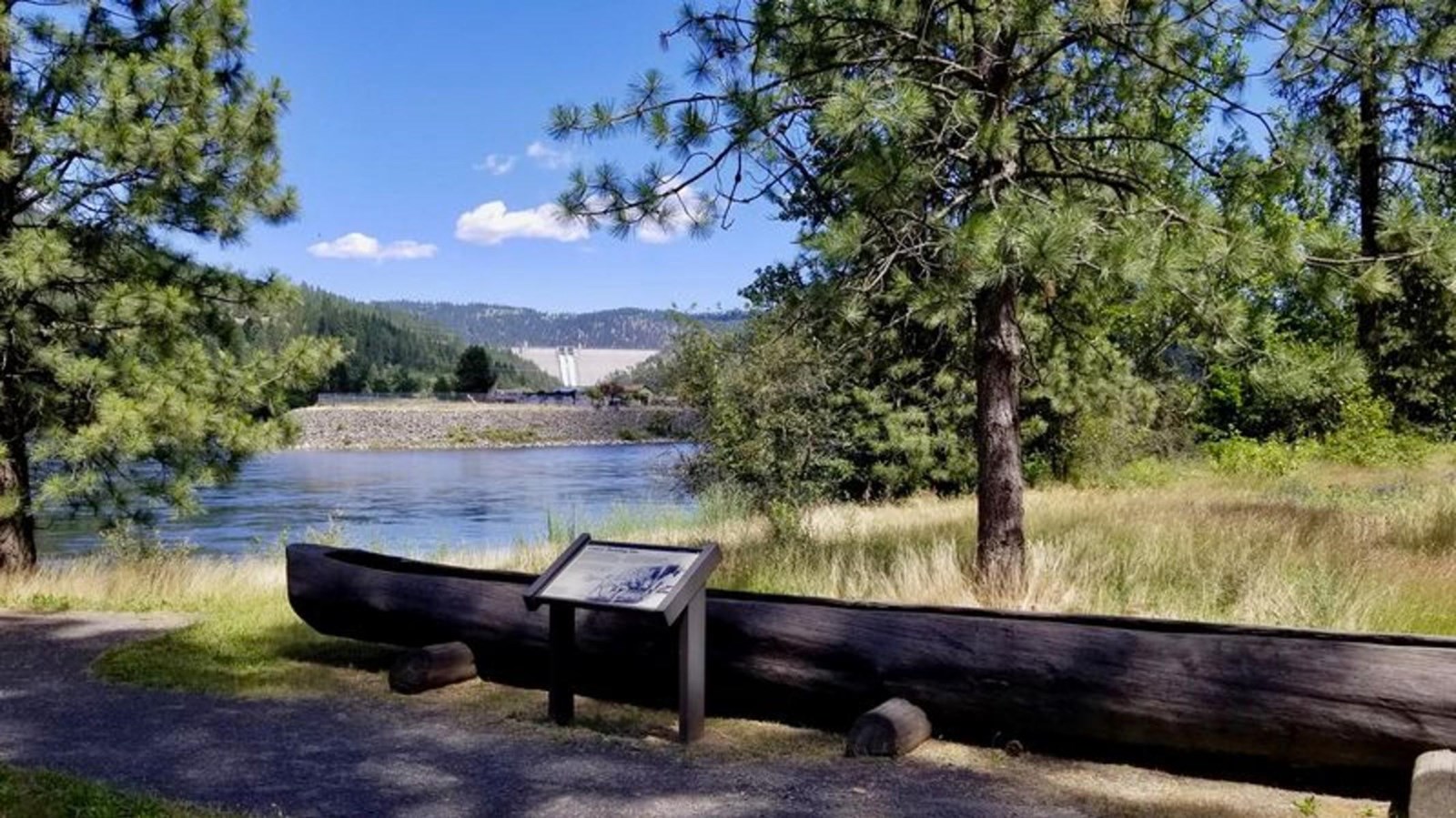Last updated: September 25, 2020
Place
Canoe Camp

Photo: Creative Commons, 2.0/John Stanton
Information Kiosk/Bulletin Board, Parking - Auto
Lewis and Clark NHT Visitor Centers and Museums
This map shows a range of features associated with the Lewis and Clark National Historic Trail, which commemorates the 1803-1806 Lewis and Clark Expedition. The trail spans a large portion of the North American continent, from the Ohio River in Pittsburgh, Pennsylvania, to the mouth of the Columbia River in Oregon and Washington. The trail is comprised of the historic route of the Lewis and Clark Expedition, an auto tour route, high potential historic sites (shown in black), visitor centers (shown in orange), and pivotal places (shown in green). These features can be selected on the map to reveal additional information. Also shown is a base map displaying state boundaries, cities, rivers, and highways. The map conveys how a significant area of the North American continent was traversed by the Lewis and Clark Expedition and indicates the many places where visitors can learn about their journey and experience the landscape through which they traveled.
Where the North Folk of the Clearwater River enters the main channel of the Clearwater, the Corps of Discovery were exhausted and famished. It was the end of September 1805 and the difficult trek over the Continental Divide was finally behind them. But on this point of land over an 11-day period, they worked incredibly hard. This was Canoe Camp.
The Corps arrived on September 26 and immediately searched for food. Deer and other large prey was nowhere to be found, so a horse was eaten. Then they tried fat dogs of the Indians.
The crew was divided into five groups, and each with axes too small for the task, they began hacking away at five huge trees – probably red cedar or possibly ponderosa pine. They saved labor by building fires along the tops of the logs, as taught them by the Nez Perce, then scraped out the ashes and charred wood.
They dried and repacked their possessions, branded and cut the forelocks off their 38 surviving horses so the animals were easily recognized when mixed with the Nez Perce herds. Finally, in the dark of night, they cached their saddles and some powder for the return trip over the divide.
Four of the canoes are believed to have been large, although no journal keeper reported any dimensions. The fifth canoe was smaller, designed to more easily scout ahead of the others and check on the conditions of the rivers.
On October 7, the men broke camp, loaded the canoes and shoved off around noon. For the first time since the fall of 1803, when they left the Ohio River, Lewis and Clark were going with the flow of a river, instead of against it.
Today, Canoe Camp is a part of the 38-site Nez Perce National Historical Park. There are six wayside exhibits at Canoe Camp spaced along a short interpretive trail. They tell the story of the original meeting between Lewis and Clark and the Nez Perce, the Nez Perce role in the building of the canoes, the mission of the Lewis and Clark expedition, and the Nez Perce historic use of the area. The site also includes a reproduction of one of Lewis and Clark's canoes. The camp site is within the unincorporated town of Ahsahka, Idaho, about 50 miles east of Lewiston.
